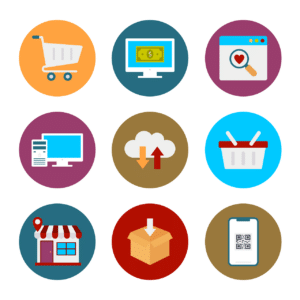Image source: Pixabay
The top two obstacles to growth are winning new customers and building people capacity who are doing well by doing good. To help you with the first obstacle, we wanted to share how our Growth CFOs think about eCommerce. We learn a lot when working with CMOs and marketing experts. As the world becomes more connected and digital, e-commerce continues to grow at an unprecedented rate. In 2020 alone, global e-commerce sales topped $4.2 trillion, with projections indicating that this number will only continue to rise. With the ever-changing landscape of e-commerce, it’s vital to stay ahead of the curve and understand the latest trends shaping the industry. Here are some of the key trends to watch in 2023:
AI-Generated Noise
AI-produced articles and pictures are going mainstream fast. As a result, AI-generated content marketing will explode while its effectiveness decreases. To keep results going in the right direction, figure out “that’s me” messaging that resonates with your ideal customer on a spiritual level. Dial into that niche even more.
Pricing Pressure
In the open eCommerce world, customers can price check. Thus, the pressure toward commoditization is even greater, especially when selling on platforms like Amazon. And pricing changes faster. This create methods to differentiate your products. When done well you can achieve value pricing which outperforms marketing pricing.
80/20 Customer Segmentation
To avoid commoditization, what are your customer segments? What is unique about the top 20%? Figure out how to keep and grow these customers as you align new customer acquisition. You will find more joy and financial freedom doing your best work for customers who love it.
Social Commerce
Social media platforms such as Facebook, Instagram, and Pinterest are quickly becoming major players in e-commerce. The integration of shopping features within these platforms, such as Instagram’s Checkout and Facebook’s Marketplace, allows users to purchase products without ever leaving the platform. This seamless integration is expected to drive social commerce growth in 2023 and beyond.
Personalization
Consumers are increasingly looking for personalized shopping experiences, and e-commerce retailers are responding by using data analytics and AI to provide customized product recommendations, targeted advertising, and personalized email marketing. This trend is expected to continue to grow in 2023, with retailers using a combination of customer data and predictive analytics to create tailored shopping experiences.
Augmented Reality (AR) and Virtual Reality (VR)
AR and VR technology are transforming the way consumers shop online. By allowing customers to virtually try on clothing or visualize furniture in their homes, retailers can provide a more immersive and interactive shopping experience. This trend is expected to grow in 2023 as more retailers adopt AR and VR technology to enhance their online shopping experiences.
Subscription Services
Subscription-based e-commerce services have been on the rise for several years, and this trend is expected to continue in 2023. Consumers are increasingly turning to subscription services for convenience, value, and personalized product recommendations. Retailers are responding by offering everything from personalized clothing subscriptions to meal kit deliveries and beauty product subscriptions.
Sustainable and Ethical Shopping
Consumers are becoming more conscious of the impact their purchasing decisions have on the environment and society. As a result, sustainable and ethical shopping practices are becoming increasingly important for e-commerce retailers. In 2023, we can expect to see more retailers focusing on sustainable and ethical sourcing, packaging, manufacturing, and initiatives to reduce their carbon footprint.
To sum up
E-commerce is an ever-evolving industry, and staying ahead of the trends is key to success. In 2023, we can expect to see continued growth in social commerce, personalization, AR/VR, subscription services, and sustainable and ethical shopping practices. Retailers who stay ahead of these trends and provide exceptional customer experiences will be well-positioned for success in the years to come. Use the numbers to focus on your 80/20 customer segments and monitor changes to stay ahead of the pack.
